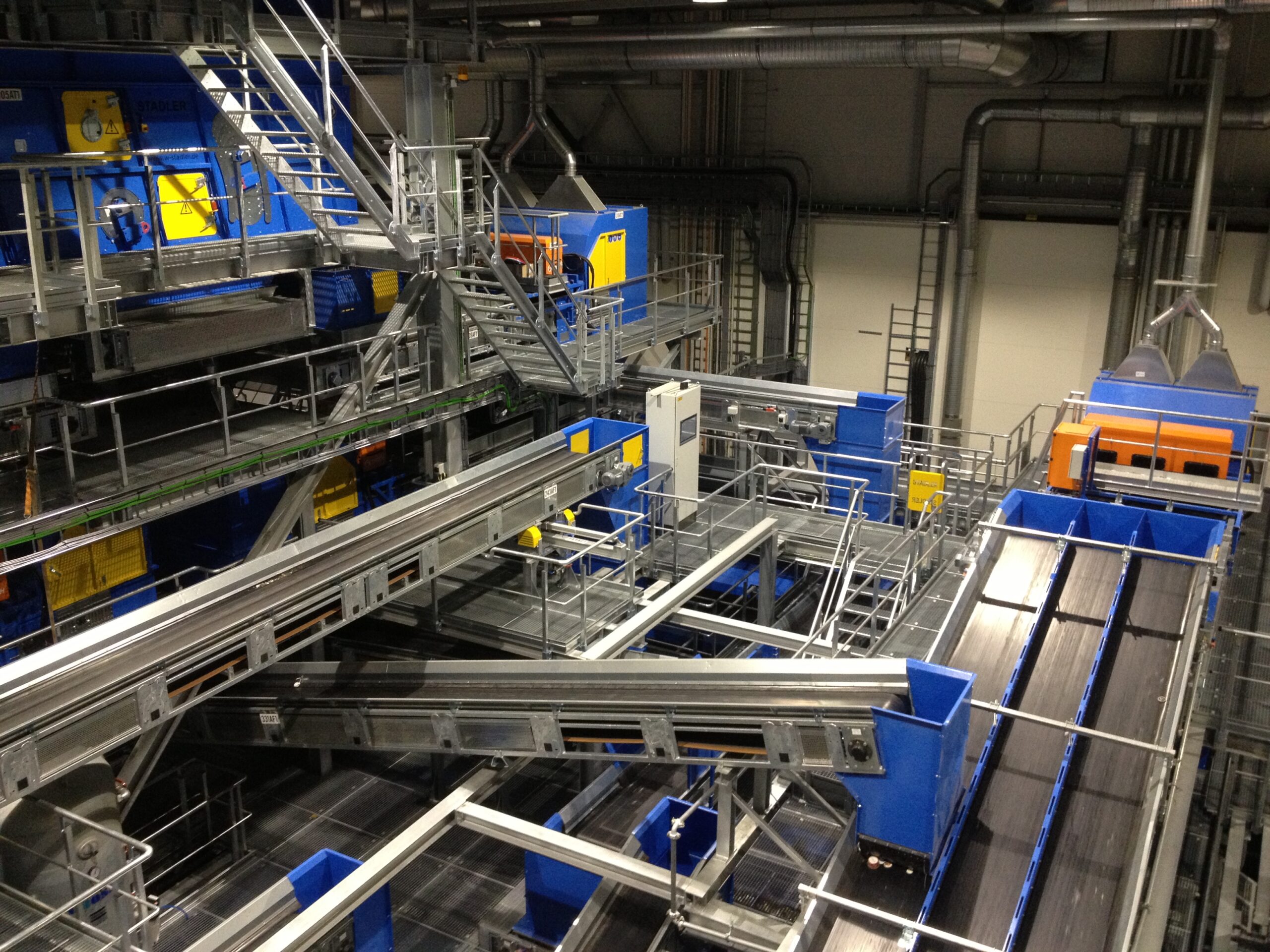Located in Skedsmokorset, near Oslo, the facility collects and sorts waste from seven surrounding municipalities. Until seven years ago, plastics, paper, cardboard, and residual waste were collected separately curbside. A lot of recyclables still ended up in the household waste fraction and were thus deemed to be burnt. Tomra and ROAF examined the household waste composition. They developed a business plan to roll out a new waste disposal strategy for the seven municipalities that ROAF serves.
The new approach includes a change in the region’s waste management and collection practices. The municipalities ROAF serves abolished the separate collection of plastics. They now follow a 3-container waste collection system. Inhabitants dispose of biowaste in green bags. They throw it together with plastics and residues in the municipal solid waste container. The container is collected by a ROAF truck and transported to the sorting center. A second container gathers paper and cardboard. The third one collects glass and metal packaging. The second part of the new business model was the construction of the world’s first fully automated sorting plant for MSW. After a 3-year period of planning, Stadler constructed the plant in 3 months. The trommels, bag openers, ballistic separators, eddy current separators, overhead magnets, and vibratory screens work in unison with the optical sorters from Tomra. Sixteen Autosorts process 40 tons of waste per hour. In the sorting process, the units recover biowaste, paper, and plastics from this waste.
In the facility, at first three of Tomra’s Autosort systems separate green bags from the remaining waste. The green bags are sent to a biogas site. There, the organics are converted into biogas for refueling the plant’s collection trucks and bio-fertilizers. The remaining waste bags undergo further sorting steps. Different drum screens separate the materials by size before ballistic separators and 16 Autosorts undertake a much more precise differentiation by material type. Five different types of plastics, as well as paper, can be separated from the infeed material. In the last step, magnets and eddy-current separators remove metallic fractions. All individual fractions generated are stored in bunkers and sold to European processors. In 2014, sorting targets were set at 2,500 tons of plastics and 6,000 tons of organics per year. The capacity in 2021 reaches 3.600 tons for plastics and 11,500 tons for biowaste. Since the automation of the plant in 2014, manual sorting efforts are no longer required. ROAF aims to reach reuse and recycling rates of 70% by 2030.










